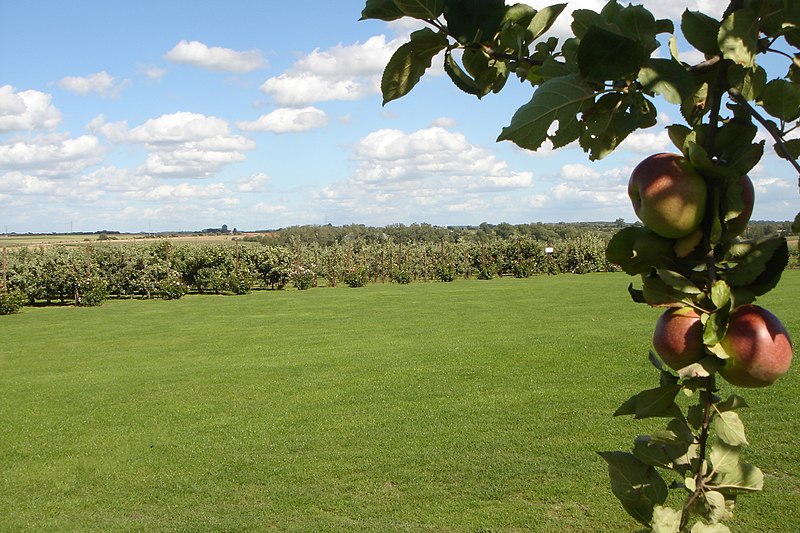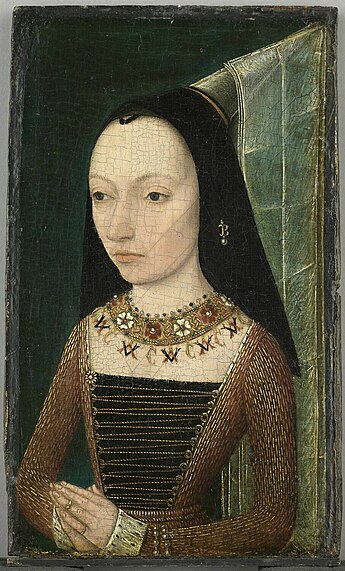 |
| Henri, Duc d'Orleans |
The Heir Plus Two Spares
François I, king of France, and his wife Queen Claude[i] were married on 18th May
1514. Their eldest child Louise was born in 1515 but died two years later[ii],
Charlotte was born in 1516[iii].
After the birth of her two eldest daughters and worried by her failure to
produce an heir for the throne of France Claude made a vow to François de Paul in front of Père Binet, general of the Order of Minims that if she was blessed with a son
she would call him François and make representations to Pope Leo X to have the friar canonised[iv].
Her son François was born on 28th February
1518;
‘On the last day of February
1517, the good, virtuous and very perfect Queen of France gave birth to her
first son, Dauphin
of Viennois, in the town of Amboise,
which was the occasion for great rejoicings throughout the realm.’[v]
François was
followed on 31st March 1519 by Henri[vi], Duc d’Orléans. The last of the couple’s boys was Charles, Duke of
Angoulême born on 22nd January 1522.
Two of their daughters also survived the perils of infancy; Madeleine born 10th August 1520,
and lastly Marguerite in June 1523.
The queen,
who was ignored by her husband, her mother-in-law Louise of Savoy and the court despite having been one of the greatest
heiresses of her time[vii],
had little bar embroidery and her children to amuse herself. The children were
brought up at the Château d’Amboise. Claude, who suffered from ill-health, died 20th
July 1524 when Henri was six.
Trouble Abroad
The
newly crowned François I had a high opinion of himself, which led him to play
games out of his league. François had ambitions in Italy; his marriage to
Claude had given him a claim to the Duchy of Milan[viii]. Immediately upon becoming king he
led an army over the Alps to take Milan from the Hapsburg
backed Sforza family. The French won the Battle of Marignano in September 1515[ix].
_-_Google_Art_Project.jpg/430px-Barend_van_Orley_-_Portrait_of_Charles_V_(1519)_-_Google_Art_Project.jpg) |
| Charles V |
François’
first setback came when he put his name forward to become Holy Roman Emperor in place of Maximilian I who died in January 1519.
Maximilian’s grandson Charles V was chosen instead. This was a
period of change in Europe; to the north and south of France the new Holy Roman
Emperor was flexing his muscles and to many of his contemporaries it looked as
though he was trying to dominate the world let alone Europe. The ruthless
Charles also took the throne of Spain from his mother Queen Juana[x].
Along with
the dispute in Italy the issue of the Duchy of Burgundy lay between the two rulers[xi].
Charles wanted to include the rich lands of Burgundy into his empire, creating a foothold in France that would always be a
threat to the French.
| Battle of Pavia |
The attack
against the Sforzas wasn’t as masterly a step as it may have seemed to François
at the time as it brought him into collision with Charles who had his own
ambitions in Italy. He allied himself with Leo X. Two years later Charles’ forces won back Milan from the
French. The French army pursued the imperial troops south and laid siege to Pavia causing the imperial captain the Marquis of Pescara to exclaim;
‘We were defeated, soon we
shall be victorious’[xii]
And so it
proved. The two sides clashed in February 1525 at the Battle of Pavia which was a crushing defeat for François who was captured in
an ambush by over 1000 imperial arquebusiers.
Imprisonment
Arriving in
Spain in the summer of 1525 François was greeted as a king, he wrote to his
mother;
 |
| Francois I |
‘Madame. To let you know the
extent of my misfortune, nothing remains to me but my honour and my life which
are safe.’[xiii]
But François
did not bear up well under imprisonment and fell into a depression and stopped
eating. An abscess in his nose was causing the doctors concern. Worried that he
might lose this valuable asset Charles hurried to his prisoner’s sickbed and
then granted permission for François’ sister Marguerite to minister to her brother.
Charles
refused to accept a ransom for François and, working to regain her son’s
freedom, Louise of Savoy acting as Regent did her best to break up the
anti-French alliance. On 30th August the Treaty of the More was signed with England[xiv].
Henry VIII would use his influence to free François who would pay the English
two million écus[xv]
in instalments.
By the
following January François had agreed the terms of the Treaty of Madrid. He gave Burgundy and Tournai to Charles and resigned his rights in Italy. In return François would return
to France as an ally of Charles[xvi].
In return François was allowed to return to France and his two elder sons would
take his place. He was affianced to Charles’ sister Eleanor of Austria on 20th January.
Spanish Internment
 |
| Bidassoa River |
‘After dinner I was brought
to see the Dauphin, and his brother Harry; both did embrace me and took me by
the hand….the King’s godson is the quicker spirit and the bolder, as seemeth by
his behaviour.’[xvii]
After an
exchange of the two young boys and their father on a raft on the Bidassoa river the French princes were originally housed at Vitoria staying with their new stepmother along with a household of
French servants including their governor, tutor and seventy attendants. But
conditions for the children changed for the worse as François reneged on his
agreement with Charles. He repudiated the treaty and the estates of Burgundy
endorsed the king’s decision as the deputies declared their wish to remain
French.
 |
| Pedraza |
‘He could not enough praise
the Duke of Orléans of wit, capacity and great will to learn, and of a prudence
and gravity passing his age, beside treatable gentleness and nobleness of mind,
whereof daily he avoweth to see great sparks.’[xix]
In 1529,
following the discovery near Palencia of a Frenchman Charles ordered that the
two princes be moved yet again to the formidable fortress of Pedraza. By this time all but one of their attendants, a dwarf, had
all been taken from them and allegedly sent to man galleys. A French agent
reported that whenever the boys were allowed out they were accompanied by large
groups of soldiers, Henri was only allowed to ride a donkey held by two men,
because of his numerous escape attempts. Henri also cursed the Spaniards at
every opportunity.
Bibliography
Martyrs and
Murderers – Stuart Carroll, Oxford University Press 2009
Catherine de
Medici – Leonie Frieda, a Phoenix Paperback 2003
Charles V –
Harald Kleinschmidt, Sutton Publishing 2004
French
Renaissance Monarchy – RJ Knecht, Longman Group 1996
The Rise and
Fall of Renaissance France – RJ Knecht, Fontana Press 1996
Catherine
de’ Medici – RJ Knecht, Pearson Education Ltd 1998
A History of
France – David Potter, The MacMillan Press 1995
Prince of
the Renaissance – Desmond Seward, MacMillan Publishing 1973
Emperor
Charles V – James D Tracey, Cambridge University Press 2010
Henri II – H
Noel Williams, Methuen and Co 1910 (reprint 2016)
www.wikipedia.en
[ii]
She was engaged to Charles V, while he was still just king of Spain, while she was
in the cradle
[iii]
She died in 1524 and was engaged to Charles V when her sister died
[iv]
Francis of Paola had already been beatified; François and Claude made the
necessary representations and St Francis was canonised the following year
[v]
Henri II - Williams
[vi]
Named as a compliment to the king of England who was his godfather
[vii]
Her mother had wanted to marry Claude to Charles V
[viii]
Through Valentina
Visconti – Claude’s grandmother; see http://wolfgang20.blogspot.co.uk/2013/04/charles-duke-of-orleans.html
[ix]
The high point of his military career
[xi]
Charles father Philip
the Handsome had inherited much of the duchy on the death of his mother Mary of Burgundy. The
duchy had been seized by the French following the death of Mary’s father Charles the Bold
[xii]
The Rise and Fall of Renaissance France - Knecht
[xiii]
Prince of the Renaissance - Seward
[xiv]
Negotiations had been interrupted by the Battle of Pavia
[xv]
In 2015
the relative: historic standard of living value of that income or wealth is £1,345,000,000.00 labour earnings of that income or wealth is
£13,620,000,000.00 economic status value of that income or wealth is £41,660,000,000.00 economic power value of that income or
wealth is £616,700,000,000.00 www.measuringworth.com
[xvi]
Deserting his former comrades in arms, the Duke of
Guelders, the king
of Navarre and Robert de la Marck
[xvii]
Catherine de Medici - Frieda
[xix]
Catherine de Medici - Frieda




